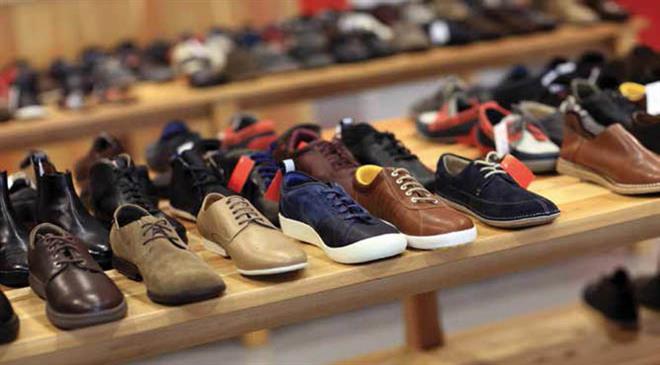End-customers now have abundant choices, as do retailers
Vikas Bagga has close to 30 years of experience in powering success stories in leadership roles for lifestyle and fashion brands. Bagga till recently was the sole resident representative for Iconix Brands, specifically for Lee Cooper Footwear in India. Ventures that have been led by Bagga include Woodland, Lotto, ID, Lee Cooper, Merrell, Geox, Rider, Alberto Torresi, Provogue, Li Ning, Jazba and Lotus Bawa. Bagga talks about distribution and the business of footwear.
What are the qualities that you look for before taking on a new vendor?
As a practicing consultant, on behalf of my client(s), I carry out a thorough validation exercise aimed at assessing the quantitative and qualitative abilities of the prospective vendors in terms of their:
Existent / available / planned / allied capacities to undertake a new project on a consistent basis. Assess ability to deliver in time in relation to a given quantum of production orders;
Requisite certifications in hand pertaining to quality, service levels, safety norms and excellence in production; y Infrastructure in terms of plant & machinery, human capital, R&D centre, access to ancillary units within the country and overseas, warehousing, etc;
- Client base-be it domestic or export led, consistency in operations and reputation in industry;
- Specialisation, if any in fabricating a discrete category / subcategory / gender based products;
- Self-sustainability of the vendor unit to operate at all times;
- Financial arrangement-fair to both sides;
- Flexibility to produce smaller lots;
- Open to comply with norms prescribed by the principals.

How do you ensure quality of your products?
Quality-related norms should be objectively defined by the principal / customer and not left to subjective arbitration during the ongoing or post-production phase. Once defined, these norms should be mutually endorsed.
Though the industry has not fully moved towards this regimen, but certainly made giant strides on this front. Just not export shipments which are subjected to multiple checks during the various stages of production and pre-dispatch inspection, but now for the last many years, even final products made available by the vendor partner for domestic consumption too go through rigorous checks.
Quality failure identified at pre-dispatch stage go through the imposition of penalties depending on the mutual agreement. Importantly, both customers and vendors are now sensitised about the quality standards that ought to be maintained. Trained quality checkers and freelance quality control experts use various measures coupled with their experience to exactly pinpoint the variations that stand unacceptable given the peculiarities of the footwear manufacturing / trade practices.
In terms of distributors, what have been the major changes for the last few years?
Given that the end-customers now have abundant choices, as do the retailers, it has become incumbent upon the distributors to exercise their discretion to continue, add or delete brand / labels / products to or from their portfolio of offerings.
The current economic slowdown has in many ways rationalised their sales projection, forecasting, pre-order booking and optimisation of operational costs. The sustainability quotient overrides all other factors; hence it has become critical than ever before for suppliers / manufacturers / brand owners and existent / prospective distributors to evaluate the business relationship along with expectations of either side on a realistic note. The offtake, throughput, topline, bottomline derivatives are all under an acute scanner as no one wants to be on the losing side.
Additional support, stock corrections, discount sharing, manpower support and mandate for servicing multiple channels of sales-some of these could even be exclusive are some of the variables that are being frequently sought by distributors to align with suppliers / brands. Eventually, it all boils down to the reigning strength of the brand(s) on one end and those of the distributors in the reckoning on the other end to align / freshly tweak a deal, that may have some concessions beyond the standard policies practiced by the brand, albeit it gets formalised as per the "merit "of the business plan for a particular region / territory / period.
What are the challenges that vendors and distributors are facing?
For vendors:
- Excessive clearances / compliances to run production units;
- Shortage of trained manpower; y Forced, long holiday breaks in several industrial zones owing to manpower movement cripples production cycles and sheer pace / momentum of the otherwise available capacities;
- Technology transfer and adoption of best practices remains a challenging task;
- Higher Infrastructure costs, be it for procurement or running the facilities;
- Overall slowdown of the global and Indian economy poses a fresh challenge for vendor run plants;
- Liquidity crises post-demonetisation.
For distributors:
- Slowdown in the economy has impacted the sentiments of the retail fraternity, who in turn depend upon end customers for retail sales;
- Business as it is remains impacted post-demonetisation owing to lower offtake and liquidity crunch;
- Pre-booking mode, prevalent in the industry for the past few years has taken a somewhat regressive turn, which has impacted the forecasting and sourcing at brands end-thus growth indexes are stressed either end;
- Heightened overheads and operating costs coupled with extended credit period to retailers hitting hard; Perennially ongoing discounts on e-commerce channels make many an offline distributor sit on inordinately high inventory cover. The distributor and offline retail community cohesively believe that in the current times, the window to sell the products at full price has greatly shrunk.
What steps need to be taken to address these?
Assuming that the current slowdown is not too deep and hopefully not long-lasting either, the government in its wisdom has announced a slew of measures in recent weeks aimed at boosting the economy in toto and consumer sentiments in particular while according concessions to retail and the manufacturing sector. Looks like more would follow in coming weeks to shake whatever seems to be on standstill mode at ground zero.
A sizable number of festivals in the ensuing months too hold promise to boost the sentiments and allied buying pattern. The monetary policy both on lending and borrowing derivatives should pave way for better disposable incomes in the hands of the consumers. This should directly take care of the short-term measures on the demand generation front amidst the otherwise excessive supply-led scenario prevailing in the industry.
Independent of the above measures, some considerate measures are required to address the issues of vendors and distributors respectively-some of these will have to be self-initiated by vendors and distributors while many others would need proactive intervention of the government / industry bodies. For vendors and manufacturing units:
- Innovation remains a non-compromising proposition; hence this facet as a proposition needs to be augmented to be seen as operating on differentials.
That being the scenario, cutting edge shall stand to be visible on all fronts;
- Optimal capacity utilisation is bound to be a bigger virtue than short-term capacity expansion. Overheads appropriation and amortisation on tooling and component costs holds ultimate key to efficiency;
- In-house training and employee retention practices, supported by industry bodies and experts affiliated to such institutions must step forward to guide the struggling as well as progressive units on affordable retention fee;
- If not single window clearance, at least minimal government departments should pursue time-bound compliances in unison so that the leadership team(s) at work can optimise their time and bandwidth to drive the units optimally. Thus, this whole concept of "ease of doing business" does not: (i) remain a mirage, (ii) remain reserved not only for start-ups and foreign entities, but is also extended to currently operating homegrown manufacturing and trading entities.
- Being an embedded part of our manufacturing legacy, all affiliated footwear manufacturers should stand to get a fair chance to produce for both domestic and exports sector. This in many ways hedges the vendors from demand / order contraction and its impact on the running of their units. Industry bodies in conjunction would need to vigorously speed up the efforts to influence the concerned government departments to plug requisite incentives / policies aimed at making the domestic produce more competitive both in domestic and export circuits.
For distributors:
- They themselves and onwardly their retail associates need to freshly absorb the importance of stock turnover expected higher margin per unit. This is not to undermine the contribution that must accrue from selling any given unit, but to align the distribution function in a manner and mode where stock turn gets better attention and redressal, if found to be sagging so that the impact of slowdown does not get over bearing due to lopsided priorities / expectancy.
- Midterm urgencies merit assessment and evaluations so that the business model itself does not get regressive beyond correction. Hence, as an intermediary between brand / manufacturer and retailers, any scope for insulation of the business from sudden or unforeseen risks should not be left unattended. Therefore, active networking with an aim to securing / disseminating financial and non-financial incentives should be a new norm in trying times.
- The distributors' portfolios like any other financial portfolios need to be reviewed periodically to assess the contribution in relation to available bandwidth so that revenue optimisation fronts can be galvanised, wherever possible.

How has business changed since the emerging of the online space and a growing younger population?
The contours of the business encompassing most consumer products have changed forever. The role of the millennials is omnipresent in terms of shaping the lifecycle of the existent brands / products as well as burgeoning innovation for us to witness in terms of roll out of newer consumer categories and allied products. The consumer community as a whole operates with a heightened expectancy while shopping for their needs-be it planned or impulse buying.
Just not abundant choices; but enticing offers, flexibility to shop, after-sales service, cash-on-delivery, easy exchanges, etc have become the new norms. The brands are able to read these trends, thanks to emerging new domains such as big data management, AI; deep dive research into consumer insights and buying behaviour have led brands to opt for composite omni-channel forays and even segregated product offerings across varied channel of sales.
The online channel, till recent times being described as still nascent and therefore touching a smaller population, is up for a big leap in a country like ours where logistics and supply chain management remain challenging. Lots of barriers have been diluted with the onslaught of online channels and many hitherto sacred forts will pave way for bigger and better consumer experiences.





